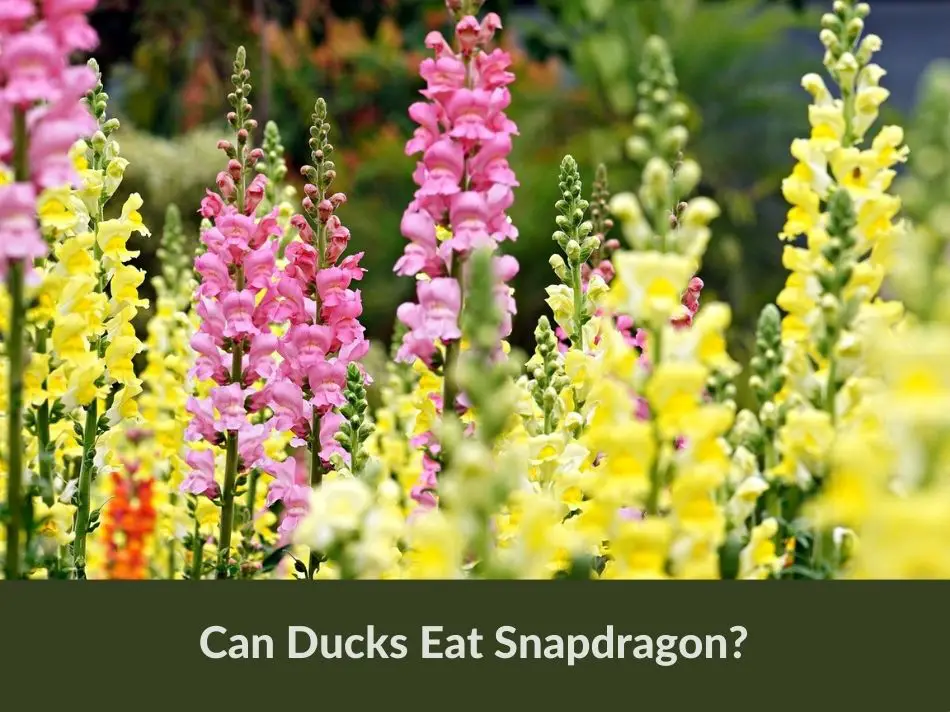Ducks are omnivorous birds that enjoy a varied diet. In the wild, they feed on a mixture of plants, seeds, insects, and small fish. Domestic ducks might be fed a diet of commercial duck feed, which is formulated to meet their nutritional needs. But, can ducks eat snapdragon?
Yes, ducks can eat snapdragon in moderation. Snapdragons are not known to be toxic to ducks or other animals. They are generally considered safe and are sometimes even used in salads for human consumption.
In this article, we will explore the suitability of snapdragons in a duck’s diet. We will discuss what snapdragons are and whether they are toxic to ducks.
Is Snapdragon Healthy For Ducks?
When considering the nutritional value of snapdragons for ducks, it’s important to understand that while these flowers are not a natural part of a duck’s diet, they do contain certain elements that can offer some benefits when consumed in moderation.
- Vitamin C: Snapdragons contain vitamin C, which is an antioxidant that can help with the repair of body tissue and the absorption of iron in the ducks’ diet. This vitamin also supports the immune system.
- Low Calories: As a plant, snapdragons are low in calories. This means they won’t contribute to obesity in ducks when fed in small amounts. Obesity can be a concern in domestic ducks due to limited foraging opportunities and overfeeding.
- Fiber: The fibrous nature of snapdragons can aid in digestion for ducks, helping to keep their gut health in check. Fiber is essential for the regular movement of the bowels.
- Minerals: While the specific mineral content of snapdragons is not well-documented, plants in general can provide trace amounts of essential minerals. These can contribute to the overall mineral intake of ducks, supporting bone health and enzyme functions.
- Phytochemicals: Plants contain various phytochemicals, which are compounds that can have antioxidant properties. These may help protect the ducks’ cells from damage.
It is crucial to note that the benefits mentioned are based on the general properties of plant consumption by ducks and the known attributes of snapdragons. Since snapdragons are not a common food for ducks, there is limited specific research on their effects.
Therefore, while snapdragons can offer some nutritional value, they should not replace more suitable and nutritionally complete food sources for ducks.
More Flowers Ducks Can Eat
Ducks can safely enjoy a variety of flowers as part of their diet. These flowers can provide vitamins and a change of pace from their regular feed. It’s important to feed them flowers that are free of pesticides and other chemicals.
Here are five more flowers that ducks can eat, which not only add a splash of color to their environment but can also offer some nutritional benefits:
Make sure to check out our full list of flowers and plants that ducks can eat.
Conclusion
Snapdragons are not toxic to ducks, but they are also not a natural or necessary part of their diet. Both caretakers and park visitors should prioritize feeding ducks appropriate foods that meet their nutritional needs.
If snapdragons are fed to ducks, it should be done infrequently and with care to avoid any potential digestive issues or nutritional imbalances.
Disclaimer: The information in this article is for informational purposes only. I'm not an expert or a veterinarian.


